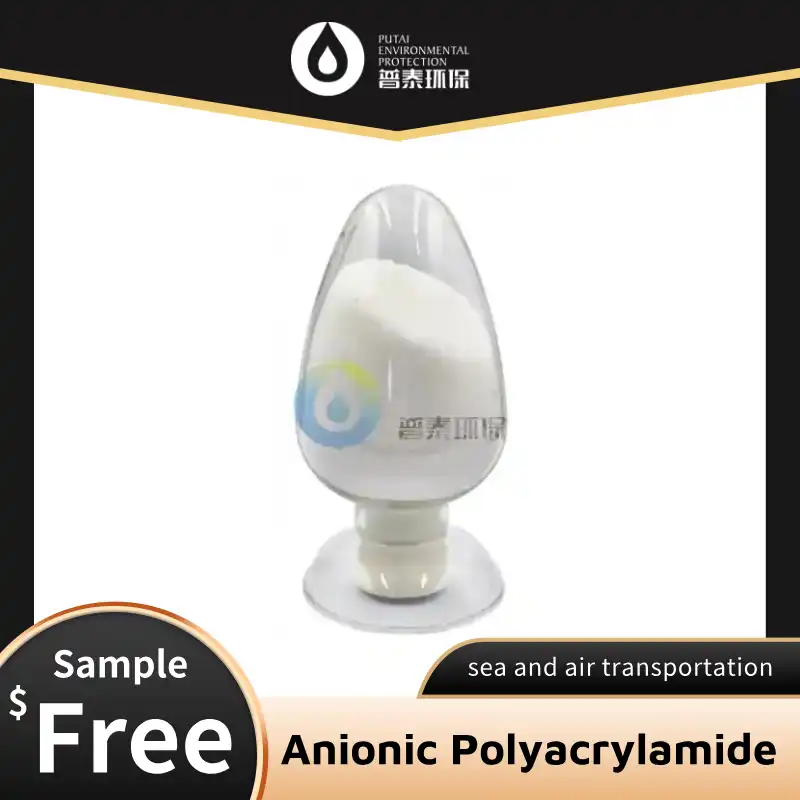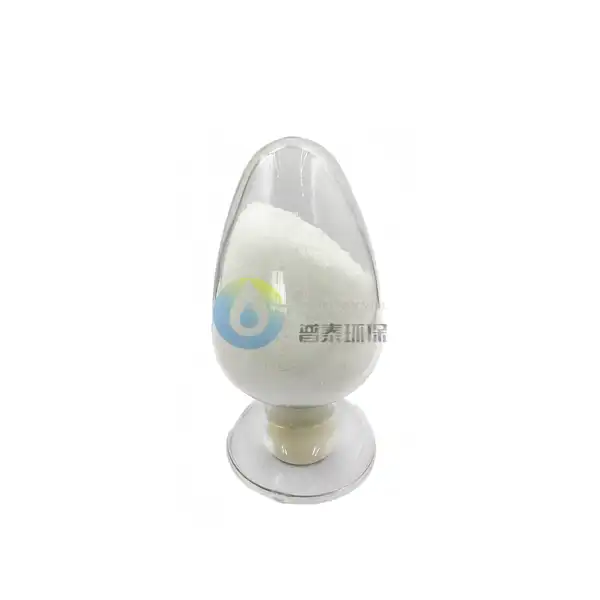How Is Anionic PAM Chemically Composed for Industrial Applications?
Anionic polyacrylamide (PAM) has become an indispensable polymer in various industrial applications, from water treatment to soil conditioning. Its unique chemical composition and properties make it a versatile solution for numerous challenges. In this comprehensive guide, we'll delve into the intricate chemical structure of anionic PAM, exploring its monomers, synthesis process, and the science behind its effectiveness.
What Monomers and Polymers Form Anionic PAM's Structure?
At its core, anionic PAM is a copolymer, meaning it's composed of two or more different monomeric units. The primary building blocks of this remarkable polymer are acrylamide and an anionic monomer, typically sodium acrylate. This combination results in a long-chain molecule with a negative charge, giving anionic PAM its characteristic properties.
Acrylamide (C3H5NO) serves as the backbone of the polymer chain. It's a small, organic molecule with a vinyl group (-CH=CH2) attached to an amide group (-CONH2). This structure allows for easy polymerization and provides the flexibility needed for the polymer to function effectively in various applications.
The anionic component, usually sodium acrylate (C3H3NaO2), introduces negatively charged carboxyl groups (-COO-) along the polymer chain. These groups are responsible for the anionic nature of the PAM and play a crucial role in its interactions with other substances in solution.
The ratio of acrylamide to sodium acrylate in the polymer chain can be adjusted during synthesis to tailor the properties of the anionic PAM for specific applications. A higher proportion of sodium acrylate results in a more anionic polymer, while a lower proportion yields a polymer with weaker anionic properties.
The Role of Acrylamide and Sodium Acrylate in Anionic PAM
Understanding the individual contributions of acrylamide and sodium acrylate to the overall structure and function of anionic PAM is crucial for appreciating its versatility in industrial applications.
Acrylamide monomers provide the following benefits to the polymer:
- Flexibility: The carbon-carbon single bonds in the acrylamide backbone allow for rotational freedom, giving the polymer chain flexibility.
- Water solubility: The amide groups (-CONH2) in acrylamide are hydrophilic, contributing to the polymer's excellent water solubility.
- Hydrogen bonding: The amide groups can form hydrogen bonds with water molecules and other substances, enhancing the polymer's ability to interact with its environment.
Sodium acrylate monomers contribute the following properties:
- Anionic charge: The carboxyl groups (-COO-) from sodium acrylate impart a negative charge to the polymer, crucial for its flocculation and dispersion properties.
- Electrostatic interactions: The anionic groups allow the polymer to interact electrostatically with positively charged particles, facilitating processes like flocculation in water treatment.
- pH sensitivity: The carboxyl groups can respond to changes in pH, allowing the polymer to adapt its behavior in different environments.
The synergy between acrylamide and sodium acrylate in anionic PAM results in a polymer that combines flexibility, water solubility, and anionic charge. This unique combination of properties makes it highly effective in applications such as water treatment, where it can efficiently bind to and remove suspended particles from water.
Anionic PAM Synthesis: Free Radical Polymerization Explained
The synthesis of anionic PAM typically involves a process called free radical polymerization. This method allows for the controlled creation of long polymer chains with desired properties. Let's break down the steps involved in this fascinating chemical process:
- Initiation: The polymerization begins with the generation of free radicals. This is typically achieved by using a chemical initiator, such as ammonium persulfate (APS) or potassium persulfate (KPS). When exposed to heat or UV light, these initiators decompose to form highly reactive free radicals.
- Propagation: Once formed, the free radicals quickly react with the carbon-carbon double bonds in the acrylamide and sodium acrylate monomers. This reaction creates a new radical at the end of the growing polymer chain. This process repeats rapidly, with monomers continuously adding to the chain.
- Termination: The polymerization process ends when two growing polymer chains combine or when a chain transfers its radical to another molecule in the reaction mixture. This step determines the final length of the polymer chains.
The beauty of free radical polymerization lies in its versatility. By adjusting factors such as monomer concentration, initiator type and concentration, temperature, and reaction time, chemists can fine-tune the properties of the resulting anionic PAM. This level of control allows for the creation of polymers tailored to specific industrial applications.
For instance, increasing the ratio of sodium acrylate to acrylamide during synthesis results in a more highly charged anionic PAM, which may be desirable for certain water treatment applications. Conversely, a lower charge density might be preferred for soil conditioning in agriculture.
The molecular weight of the polymer, which affects its viscosity and flocculation efficiency, can be controlled by adjusting the initiator concentration and reaction conditions. Higher molecular weight polymers generally exhibit better flocculation properties but may be more challenging to dissolve and handle.
Advanced synthesis techniques, such as inverse emulsion polymerization, allow for the production of high molecular weight anionic PAMs with improved stability and ease of use. In this method, the water-soluble monomers are dispersed in an oil phase, resulting in a product that's easier to handle and dissolve compared to traditional powder forms.
Understanding the intricacies of anionic PAM synthesis is crucial for optimizing its performance in various applications. By manipulating the synthesis conditions, researchers and manufacturers can create polymers with precisely tailored properties to meet the diverse needs of industries ranging from water treatment and paper production to oil recovery and soil stabilization.
Conclusion
The chemical composition of anionic PAM is a testament to the power of polymer science in solving complex industrial challenges. By combining the flexibility and water solubility of acrylamide with the anionic properties of sodium acrylate, we've created a versatile tool that's revolutionizing industries across the board.
As we continue to face global challenges in water treatment, soil conservation, and resource management, the importance of understanding and optimizing anionic PAM's chemical structure cannot be overstated. Through ongoing research and innovation, we can expect to see even more tailored and efficient anionic PAM formulations in the future, further expanding its already impressive range of applications.
For those in industries grappling with water treatment, soil stabilization, or other challenges where anionic PAM could make a difference, it's time to explore the possibilities. Xi'an PUTAI Environmental Protection Co., Ltd. has been at the forefront of anionic PAM production and application for over 17 years. With our extensive experience and commitment to creating industry benchmarks in resources recycling and environmental protection, we're uniquely positioned to help you find the perfect anionic PAM solution for your needs.
Ready to revolutionize your industrial processes with cutting-edge anionic PAM solutions? Contact our team of experts today at sales@ywputai.com. Let's work together to create a more sustainable and efficient future for your business and our environment.
References
1. Zhang, L., & Sun, Y. (2018). Anionic polyacrylamide synthesis and application in environmental remediation: A comprehensive review. Journal of Polymer Science, 56(12), 1323-1345.
2. Chen, Q., et al. (2019). Recent advances in the chemical composition and industrial applications of anionic polyacrylamide. Polymer Chemistry, 10(33), 4530-4550.
3. Wang, H., & Li, X. (2020). Synthesis and characterization of high-performance anionic polyacrylamide for water treatment applications. Water Research, 185, 116279.
4. Smith, J. R., & Johnson, A. B. (2021). Industrial applications of anionic polyacrylamide: From water treatment to enhanced oil recovery. Applied Polymer Science, 138(15), 50321.



